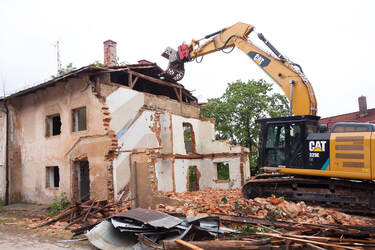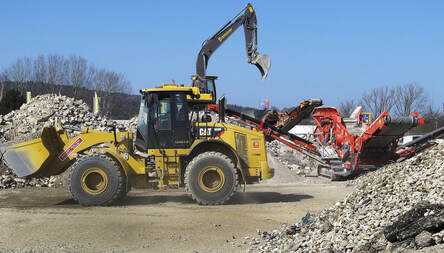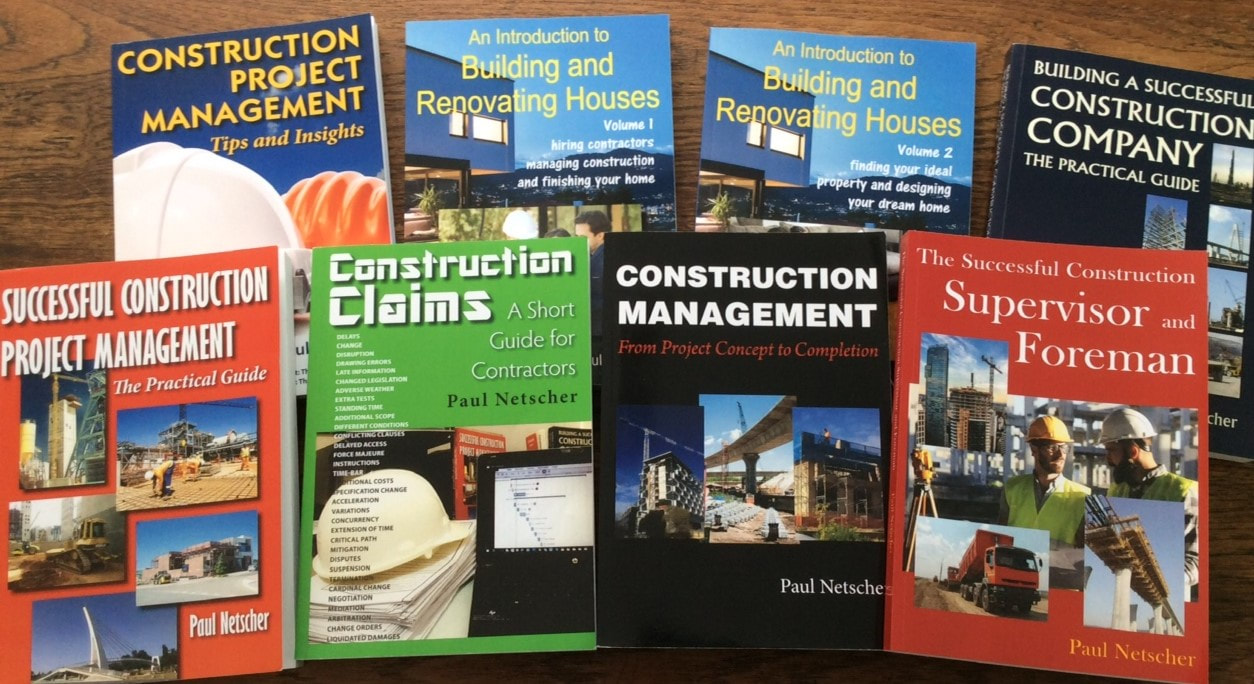|
It was 1989. Bob Berkebile, a creative thinker with a passion for the environment, wondered how he and his fellow architects could design environmentally responsible buildings. Berkebile formed a small committee, and his idea gained traction. The U.S. Green Building Council, a leading agency in sustainable design and construction, was eventually born. The USGBC’s green rating system is called Leadership in Energy and Environmental Design, or LEED and it is used around the globe today. Projects that promote health, energy efficiency and cost savings are awarded LEED certification in various categories. The movement that Berkebile started has forever changed the way structures are designed and built. It has even changed traditional approaches to disposing of waste. Construction waste a huge problemIn 2018, the U.S. generated around 600 million tons of construction and demolition, or C&D, materials. That was dramatically up from the estimated 136 million tons generated in 1996. Anything that is being built, renovated or torn apart — such as buildings, production plants, highways and bridges — creates debris. Demolitions account for about 90 percent of the waste. The Environmental Protection Agency urges contractors to stop thinking of C&D materials as waste and start thinking of them as commodities. The discussion is not just limited to doors, hardware, plumbing fixtures, and other intact building components. Scrap metals, plastics, wood, glass, bricks, concrete, and asphalt also have value, yet they are sent to landfills every day. The construction industry can join efforts with the EPA in several ways: reducing waste at the source, reusing salvageable materials, recycling or donating materials, and purchasing C&D materials for use on new projects. These are also good pathways to earning LEED certification. Reducing construction wasteOne of the best ways to manage C&D waste is to not generate it in the first place. For example, architects and designers are making buildings more adaptable for a variety of potential uses in the future. For contractors, source reduction is a matter of keeping waste prevention on the front burner throughout the planning process: • Deliberately choose products that are reusable, recyclable, or easy to disassemble. • Choose vendors that promote waste prevention. • Choose products with minimal packaging. • Take inventory of supplies more often. • Verify that measurements are precise. • Teach subcontractors to identify and sort reusable or recyclable materials on the job site. Reusing construction and demolition materialsThe savings associated with salvaging and reusing materials make this a popular way to do one’s part. In some areas of the country, it is significantly less expensive to recover valuable products than it is to dispose of them in landfills. What can and cannot be reused varies depending on location, but these are some commonly repurposed items: • Appliances • Fixtures • Doors • Hardware • Marble • Sinks, bathtubs, and toilets • Mirrors • Multipaned windows • Wood flooring, cabinetry, scrap wood, and wood cutoffs • Bricks, concrete, and stonework • Ironwork • Leftover paint • Excess insulation • Gypsum removed from drywall • Packing materials Leveraging DeconstructionThere is a growing trend toward dismantling structures rather than destroying them altogether. Deconstruction has several benefits: • Usable materials are easier to locate and recover. • The country requires fewer landfills. • Greenhouse gas emissions from incinerators and landfills are reduced. • More trees are conserved. • Materials remain local to eliminate the harmful effects of extracting resources and shipping new products. • Unwanted materials can be donated to individuals or groups that post a wish list. These include vocational training centers, local business owners, schools, artists, woodworkers, and community theater groups. • Deconstruction provides jobs and creates business opportunities. The best structures for deconstruction include wood-framed buildings, buildings that contain valuable materials or products, and buildings that are structurally sound. If a structure has begun to decay but still retains valuable elements, it can be partially deconstructed before demolition. Recycling construction and demolition materialsThere is no denying that the U.S. recycling system could use some work. Well-intentioned contractors are often unsure about which materials can be recycled and where to drop them off. The EPA is working to clear up the confusion. In October of 2020, the agency released its National Recycling Strategy and invited public feedback. The main objectives are to reduce contamination, make processing more efficient and expand markets for recyclable products. In the meantime, in areas where markets exist, wood can be repurposed for compost, mulch or even furniture. Most metals used in construction are recyclable. Concrete, gravel and asphalt are used to make new products or aggregate. Cardboard is not technically a C&D material, but packaging from job sites need not go to waste. It is worth noting that some supposed recycling centers take shortcuts or otherwise mismanage materials. Useful products end up in landfills right along with useless ones. Contractors should verify that the processing center is licensed or has third-party certification and complies with regulations. The website of the Construction & Demolition Recycling Association has a tool for searching recycling centers by location and material type. Purchasing recycled construction materialsReuse centers or retail businesses carry everything from millwork to fencing to architectural molding. The retail stores typically have a smaller selection, but their materials and products are of greater value. Many products have been cleaned up or otherwise prepared for sale. Waste and material exchanges are also good options. Waste exchanges usually handle hazardous substances while material exchanges do not. Some exchanges are brick-and-mortar warehouses with a catalog of goods. Others connect buyers and sellers through a website. Buying used C&D materials not only promotes sustainability, but it makes good business sense. Construction and renovation costs are reduced. Since used products are almost always sourced locally, communities get an economic boost. The EPA’s Comprehensive Procurement Guideline Program is a great resource for buying used C&D products. Keeping C&D materials out of landfills is a gift that will keep on giving for generations to come. LEED certification is an additional perk for contractors. A LEED-certified home or business is a testament to innovation and sustainability. There are many benefits to reducing waste from construction and demolitionDisposing of construction materials is expensive. There's the cost to load it, transport it, then the dump fees. There's also the cost to the environment. The environmental cost to get rid of the material, the environmental cost to create new materials, and the environmental impacts of the dump. Recycling and reusing materials is often cheaper. Upcycling old buildings could be cheaper, and certainly less harmful to the environment. It may even help protect heritage buildings and heritage features. Buildings with good LEED certification can command higher prices from buyers. More people are environmentally conscious these days. Anyway shouldn't we be protecting the future that our children will inherit? This is a guest post. Do you want to learn how to manage construction projects successfully?Paul Netscher has written several easy to read books for owners, contractors, construction managers, construction supervisors and foremen. They cover all aspects of construction management and are filled with tips and insights.
Visit to read more. The books are available in paper and ebook from most online stores including Amazon. construction management construction project management
23 Comments
30/12/2020 02:51:20 pm
I liked it when you shared that demolition will help to discover useable materials that can be used for other purposes. It is very important to extract them so they can be recycled rather than being useless. I would like to think if a company is planning on demolishing a building that is not used anymore, it should hire a reliable service that is experienced to do so.
Reply
19/1/2021 05:14:55 am
Giving demolished building materials a new life through the process of recycling. Nice article!
Reply
4/2/2021 02:19:25 pm
It is interesting that this post shared that when choosing plumbing supplies for a new home construction, it is important for us to ensure that the materials are of quality. The other day my friend mentioned he is planning to buy a new house. I will definitely remind him to consider the quality of the plumbing supplies to ensure it is top-notch.
Reply
13/2/2021 03:26:28 am
I'm glad you talked about how it's important to recycle your construction materials. My wife and I are making some renovations to our home, and we've noticed that a lot of the construction's materials will be trashed along with our regular garbage. As soon as we noticed that, I started researching ways to dispose of our construction's waste responsibly. I appreciate you helping me learn how to manage waste in a more sustainable way.
Reply
16/2/2021 09:15:19 am
There are a lot of things you can recycle from construction materials nowadays. There are also many ways on how to reuse them for other purposes as well. It seems that the world is trying to be eco-friendly again.
Reply
18/2/2021 05:43:42 pm
The facts that have been discussed here are really important. Thank you so much for sharing a great post.
Reply
18/2/2021 06:25:14 pm
As waste materials from construction can be: wood, drywall, masonry, metal, concrete, plastic, glass, cardboard. The construction waste quantities are bigger in metropolitan areas, where there are more buildings. Usually the construction waste is storage in landfills. Excellent explanation. Anyone can easily comprehend since it’s simple & focused. Keep up the great work!
Reply
4/3/2021 07:34:57 am
I didn't know that some structures can be deconstructed a little bit before getting demolished. That would be nice to help recycle some materials. But it would take too long to deconstruct everything so demolition still sounds like a better deal to me.
Reply
5/3/2021 07:15:39 pm
Thank you for sharing this information on construction management blog. It was useful and interesting. You indeed have written it in a layman way so that anyone can understand and work accordingly. You have done a great job. This resourcehttp://littlebinsdisposal.com/ i came across recently and is nice too as this particular site
Reply
10/3/2021 07:07:45 pm
What wonderful information, thanks a lot for sharing kind of content with us. Your blog gives the best and the most interesting information. I wonder if we can gather such practical information about the construction debris waste or sustainable commodity. Great one!!
Reply
23/3/2021 10:37:31 pm
The facts that have been discussed here are really important. Thank you so much for sharing a great post.
Reply
14/4/2021 04:03:57 pm
This is a brilliant post, thank you for sharing about construction debris waste or sustainable commodity and high rise homes. We always tend to change something or the other in our house, thanks for this great advice.
Reply
16/4/2021 01:03:59 am
The other day my friend mentioned that he is looking to have a guest house built, therefore he needs to hire a construction company. It makes sense for us to hire a company that is reputable and legally licensed as it ensures that the construction company will operate legally and professionally. After reading this post, I will remind my friend to look into their licenses and certificates before moving forward.
Reply
20/4/2021 06:49:08 pm
Thank you for sharing this informative blog about construction wastage and demolition.This is really a good blog. Please keep sharing such informative blogs.
Reply
23/6/2021 12:38:07 am
I can see how a business could really benefit from getting the right kind of demolition for their building in order to be better. Making sure that they can get the work done by a professional could allow them to be a lot safer with the waste. It was interesting to learn about how they can then recycle, and reuse materials that can prevent it from being harmful to the environment.
Reply
Thanks for pointing out that disposing of construction materials is expensive, so it would be best to handle the waste properly. I hope that I find a demolition company that is able to properly dispose of their waste once the project is done. I just need their services to demolish a part of the house since I want to add a couple of rooms for my growing kids.
Reply
8/9/2021 01:02:52 pm
Thanks for pointing out that we can reuse demolition materials to save money and protect the environment. This is really helpful because my husband and I are planning to renovate our living room next month. We are also hoping to find large skip bins on Monday to ensure cleanliness and safety around our property during the renovation.
Reply
30/12/2021 12:02:00 am
I want to get a home built, but I want to make sure that it's built from the right materials. It makes sense that I might want to consider having it made from recycled materials! That seems like a good way to ensure that it's good for the environment.
Reply
7/10/2022 03:03:54 pm
I liked it the most when you shared that recycling and reusing construction materials is often more affordable. My friend wants to get their old home demolished. I should advise him to hire a demolition contractor that is licensed and insured.
Reply
1/6/2023 11:41:29 am
Thank you for pointing out that, despite having value, scrap metals, plastics, wood, glass, bricks, concrete, and asphalt are routinely disposed of in landfills. My mother is remodeling the house and wants to take away some asphalt. I'll advise her to reuse the asphalt.
Reply
Leave a Reply. |
Archives
June 2024
Note: We welcome genuine comments, especially comments that add additional information to the subject matter in the article. We however reserve the right to remove inappropriate comments, which includes comments that have nothing to do with the subject, comments that include inappropriate language, and comments that are an advertisement for a product or company, or which include an advertising link. Comments must be in English. We will not enter into discussion on why a particular comment was removed.
CategoriesCopyright 2016 - The attached articles cannot be reproduced for commercial purposes without the consent of the author.
The opinions expressed in the attached articles are those of the writer. It should be noted that projects are varied and different laws and restrictions apply which depend on the location of the contractor and the project. It's important that the reader uses the supplied information taking cognisance of their particular circumstances. The writer assumes no responsibility or liability for any loss of any kind arising from the reader using the information or advice contained herein. "I have what I consider some of the best books on construction management."
Books are available from: Amazon.com Amazon.co.uk takealot.com kalahari.com Amazon.in Amazon.de Amazon.fr Amazon.it Amazon.com.au Powell's Fishpond uread bokus Amazon.ca Amazon.es Other retail stores Available in paperback or on Kindle "28 YEARS OF CONSTRUCTION PROJECT MANAGEMENT EXPERIENCE, DEVELOPING SUCCESSFUL CONSTRUCTION PROJECT MANAGERS AND BUILDING SUCCESSFUL CONSTRUCTION COMPANIES"
|









 RSS Feed
RSS Feed




